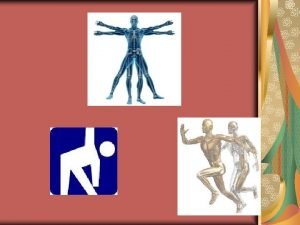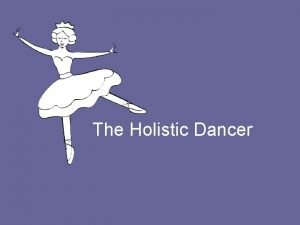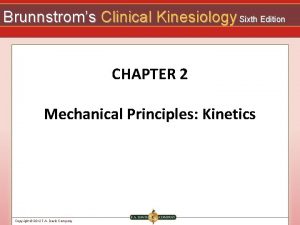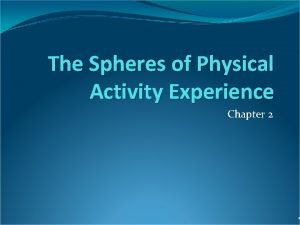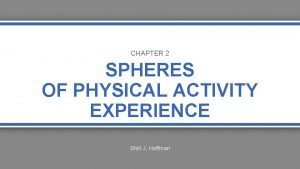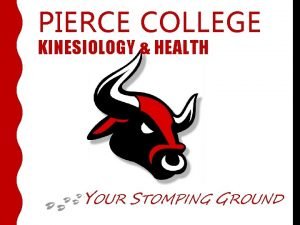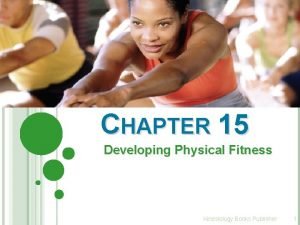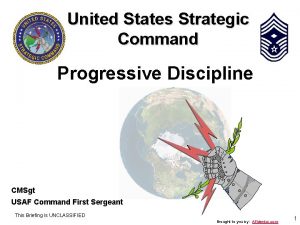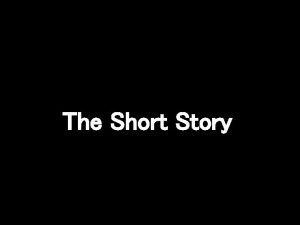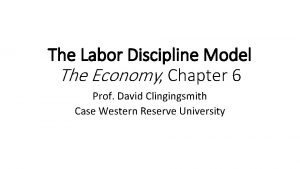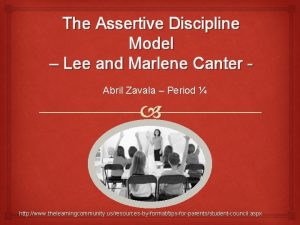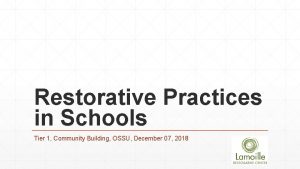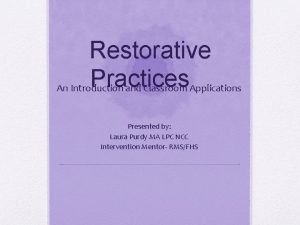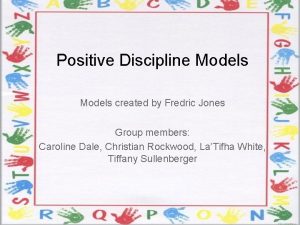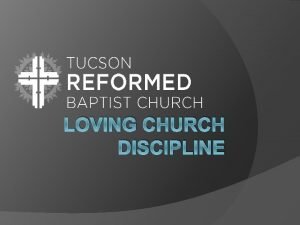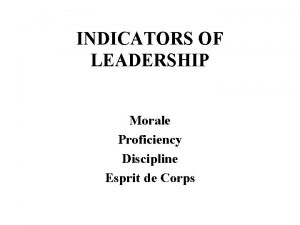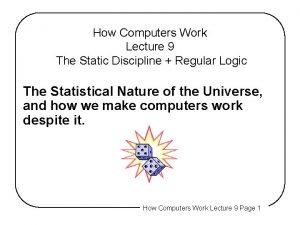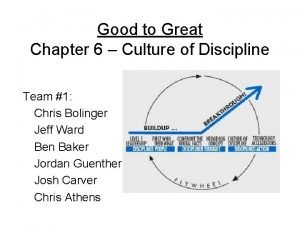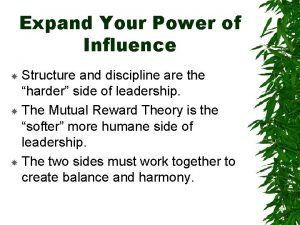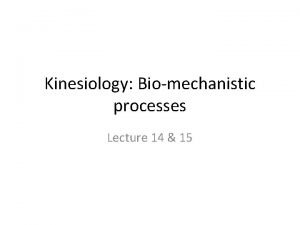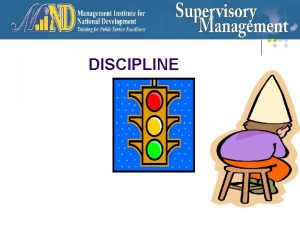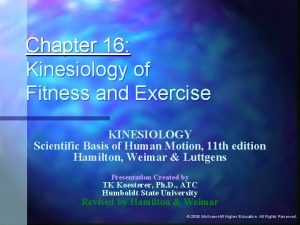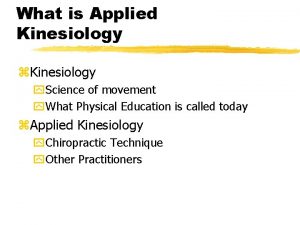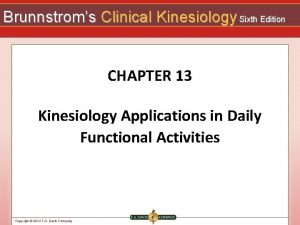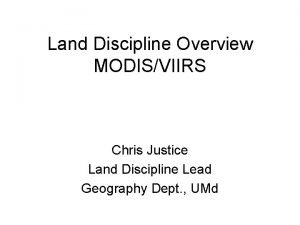Introduction to Kinesiology Kinesiology is a discipline or



























































- Slides: 59

Introduction to Kinesiology

Kinesiology is a discipline or body of knowledge that focuses on physical activity DISCIPLINE: 1. 2. 3. Is a body of knowledge organized around a theme or focus Unique way to learn about the discipline of kinesiology Way of knowing about our discipline 1. 2. 3. Performing and watching Scholarly study Professional practice

Figure 1. 1

Kinesiology WE HAVE DEFINED KINESIOLOGY AS: 1. KNOWLEDGE DERIVED FROM EXPERIENCING 2. PHYSICAL ACTIVITY, SCHOLARLY STUDY OF 3. PHYSICAL ACTIVITY, AND PROFESSIONAL PRACTICE CENTERED IN PHYSICAL ACTIVITY; • this knowledge becomes part of the discipline when it is embedded in a university curriculum and used by kinesiologists in their research

Figure 1. 2

Kinesiology • A discipline focused on human physical activity • Physical activity knowledge derived from : 1. 2. 3. Experience (participate or observe) Scholarship (study; ONLY knowledge that is embedded in college or university kinesiology curriculum or in research, which helps ensure the quality and integrity of the knowledge) Professional practice (to help others achieve physical activity goals)

What Is Physical Activity? • The centerpiece of kinesiology • A term for which many definitions exist so we must specify our technical definition

Figure 1. 3

Example of Definition That Is Too Exclusive “…bodily movement that is produced by skeletal muscles and substantially increases energy expenditure. ” (italics added) (U. S. Department of Health and Human Services [USDHHS] 1996, p. 21)

Our Technical Definition of Physical Activity Does NOT Include… • Human movements that are Involuntary Performed aimlessly and without a specific purpose • All human movement NOT all movement is physical activity. All physical activity is movement.

Our Technical Definition of Physical Activity DOES Include… • Physical activity that is − intentional, − voluntary, and directed toward achieving an identifiable goal. −

Developing an Understanding of Kinesiology • Experiential knowledge • Theoretical knowledge • Professional practice knowledge

Experiencing Physical Activity • Direct participation in physical activity is an important source of kinesiological knowledge. • Observation of physical activity is also an important source of kinesiological knowledge. • *Page 18 in book!

Studying Physical Activity • Involves examining physical activity through research and logical, systematic analyses • Organized within sub disciplines, which have developed into specialized areas of study

Practicing a Physical Activity Profession • Putting knowledge to work in physical activity careers • Some knowledge gained through professional practice gets incorporated into university classes

Figure 1. 4

Focus of Kinesiology • Exercise Training Health-related Therapeutic • Skilled movement Sport Developmental skills

Focus of Kinesiology • EXERCISE • • Training • Conditioning to improve athletic performance or other activities Health-related • Develop /maintain sound working body Therapeutic • Restore previously acquired/developed capabilities Examples?

Focus of Kinesiology Skilled movement Sport Form of physical activity Skilled movements Achieve a goal defined by established rules Usually competitive context Developmental Non sport setting Rules & competitions irrelevant Some examples?

Figure 1. 5

Figure 1. 6

Why Kinesiology? Various Names for Kinesiology Department of… • • • physical education health, physical education, recreation, and dance physical education, health, and leisure studies physical education and fitness exercise and health science sport science and physical education exercise and sport science physical education and movement sciences and leisure studies food, nutrition, and exercise science human movement studies sport studies

Key Organizations Make Name Changes • The American Academy of Physical Education became the American Academy of Kinesiology and Physical Education (AAKPE) • The National Association for Health and Physical Education in Higher Education became the National Association for Kinesiology, Health and Physical Education in Higher Education (NAKHPEHE) • The newly established American Kinesiological Association (AKA)

Holistic Nature of Kinesiology • Although kinesiology usually focuses on the bodily aspects of physical activity, it is important to remember that human beings are holistic creatures with interrelated cognitions, emotions, bodies, and souls. Social Emotional Physiological Physical

Figure 1. 7

Figure 1. 8

Figure 1. 9

Figure 1. 10

Kinesiology: A Subdisciplinary View (from Dr. Wughalter) Sport Psychology Special Populations Motor Learning and Control Sport History Sport Philosophy Kinesiology Exercise Physiology Sport Art Sport Anthropology Biomechanics Measurement and Statistics Sport Sociology

Figure 1. 11

Spheres of Professional Practice Figure 1. 13

Ok…switch gears!!!!

Are Physical Activity Professionals Needed? . . . Yes! • One reason is the low levels of physical activity and the resulting obesity epidemic facing our nation. • Take a look at the following slides from the Centers for Disease Control to see how our nation’s level of obesity is on the rise as a result of our low levels of physical activity. • What impact can you make as a physical activity professional?

Obesity Trends Among U. S. Adults Watch the progression of the trend over the years.

Obesity Trends* Among U. S. Adults BRFSS, 1985 *BMI ≥ 30, or ~30 lbs (13. 6 kg) overweight for 5’ 4” (162. 5 cm) person.

Obesity Trends* Among U. S. Adults BRFSS, 1986 *BMI ≥ 30, or ~30 lbs (13. 6 kg) overweight for 5′ 4″ (162. 5 cm) person.

Obesity Trends* Among U. S. Adults BRFSS, 1987 *BMI ≥ 30, or ~30 lbs (13. 6 kg) overweight for 5′ 4″ (162. 5 cm) person.

Obesity Trends* Among U. S. Adults BRFSS, 1988 *BMI ≥ 30, or ~30 lbs (13. 6 kg) overweight for 5’ 4″ (162. 5 cm) person.

Obesity Trends* Among U. S. Adults BRFSS, 1989 *BMI ≥ 30, or ~30 lbs (13. 6 kg) overweight for 5′ 4″ (162. 5 cm) person.

Obesity Trends* Among U. S. Adults BRFSS, 1990 *BMI ≥ 30, or ~30 lbs (13. 6 kg) overweight for 5′ 4″ (162. 5 cm) person.

Obesity Trends* Among U. S. Adults BRFSS, 1991 *BMI ≥ 30, or ~30 lbs (13. 6 kg) overweight for 5′ 4″ (162. 5 cm) person.

Obesity Trends* Among U. S. Adults BRFSS, 1992 *BMI ≥ 30, or ~30 lbs (13. 6 kg) overweight for 5′ 4″ (162. 5 cm) person.

Obesity Trends* Among U. S. Adults BRFSS, 1993 *BMI ≥ 30, or ~30 lbs (13. 6 kg) overweight for 5’ 4” (162. 5 cm) person.

Obesity Trends* Among U. S. Adults BRFSS, 1994 *BMI ≥ 30, or ~30 lbs (13. 6 kg) overweight for 5’ 4” (162. 5 cm) person.

Obesity Trends* Among U. S. Adults BRFSS, 1995 *BMI ≥ 30, or ~30 lbs (13. 6 kg) overweight for 5’ 4” (162. 5 cm) person.

Obesity Trends* Among U. S. Adults BRFSS, 1996 *BMI ≥ 30, or ~30 lbs (13. 6 kg) overweight for 5’ 4” (162. 5 cm) person.

Obesity Trends* Among U. S. Adults BRFSS, 1997 *BMI ≥ 30, or ~30 lbs (13. 6 kg) overweight for 5’ 4” (162. 5 cm) person.

Obesity Trends* Among U. S. Adults BRFSS, 1998 *BMI ≥ 30, or ~30 lbs (13. 6 kg) overweight for 5’ 4” (162. 5 cm) person.

Obesity Trends* Among U. S. Adults BRFSS, 1999 *BMI ≥ 30, or ~30 lbs (13. 6 kg) overweight for 5’ 4” (162. 5 cm) person.

Obesity Trends* Among U. S. Adults BRFSS, 2000 *BMI ≥ 30, or ~30 lbs (13. 6 kg) overweight for 5’ 4” (162. 5 cm) person.

Obesity Trends* Among U. S. Adults BRFSS, 2001 *BMI ≥ 30, or ~30 lbs (13. 6 kg) overweight for 5’ 4” (162. 5 cm) person.

Obesity Trends* Among U. S. Adults BRFSS, 2002 (*BMI 30, or ~ 30 overweight lbs overweight for 5’ 4” person) *BMI ≥ 30, or ~30 lbs (13. 6 kg) 5’ 4” (162. 5 cm) person.

Obesity Trends* Among U. S. Adults BRFSS, 2003 *BMI ≥ 30, or ~30 lbs (13. 6 kg) overweight for 5’ 4” (162. 5 cm) person.

Obesity Trends* Among U. S. Adults BRFSS, 2004 *BMI ≥ 30, or ~30 lbs (13. 6 kg) overweight for 5’ 4” (162. 5 cm) person.

Obesity Trends* Among U. S. Adults BRFSS, 2005 (*BMI ≥ 30, or ~ 30 lbs. overweight for 5’ 4” person)

Obesity Trends* Among U. S. Adults BRFSS, 2006 (*BMI ≥ 30, or ~ 30 lbs. overweight for 5’ 4” person)

Obesity Trends Among U. S. Adults BRFSS, 1990, 1998, 2006

Obesity Trends Among U. S. Adults • We have never had an epidemic like this that we have been able to track so thoroughly. • About 60 million adults, or 30 percent of the adult population, are now obese, which is a doubling of the rate since 1980.

Are Physical Activity Professionals Needed? . . . Yes! Here is another illustration of the impact of physical activity on our nation: As obesity rises as a result of low levels of physical activity, so does the prevalence of diabetes. Take a look at the following slides from the American Medical Association to see how the prevalence of diabetes has changed in our nation. What impact can you make as a physical activity professional?
 Introduction to the discipline of history
Introduction to the discipline of history First year seminar
First year seminar Fixation and stabilization in kinesiology
Fixation and stabilization in kinesiology Biomechanics kinesiology definition
Biomechanics kinesiology definition Degrees of freedom kinesiology
Degrees of freedom kinesiology Repeat
Repeat Ucf health sciences health promotion track
Ucf health sciences health promotion track Holistic kinesiology definition
Holistic kinesiology definition Utsa kinesiology internship
Utsa kinesiology internship Canadian kinesiology alliance
Canadian kinesiology alliance Angular motion kinesiology
Angular motion kinesiology Manual of structural kinesiology 18th edition
Manual of structural kinesiology 18th edition Brunnstrom's clinical kinesiology 7th edition
Brunnstrom's clinical kinesiology 7th edition Objectives of physical education
Objectives of physical education Physical sphere
Physical sphere Pierce college kinesiology
Pierce college kinesiology Wing standing position
Wing standing position Swaha kinesiology
Swaha kinesiology Canadian kinesiology alliance
Canadian kinesiology alliance Clinical kinesiology and anatomy 6th edition
Clinical kinesiology and anatomy 6th edition Kinesiology books publisher
Kinesiology books publisher Conclusion paragraph format
Conclusion paragraph format Discuplus
Discuplus Progressive discipline afi
Progressive discipline afi Air force progressive discipline
Air force progressive discipline Theories of transfer of learning
Theories of transfer of learning Tspc discipline
Tspc discipline Discipline
Discipline Labour discipline model economics
Labour discipline model economics Depth and complexity frame
Depth and complexity frame Art humanistic psychology
Art humanistic psychology Lee canter theory
Lee canter theory Senge fifth discipline summary
Senge fifth discipline summary Chapter 37 discipline chart 2021
Chapter 37 discipline chart 2021 Chapter 37 discipline chart 2020
Chapter 37 discipline chart 2020 Tea chapter 37 discipline
Tea chapter 37 discipline Social discipline window
Social discipline window Restorative practice
Restorative practice Affective statement examples
Affective statement examples Social discipline window
Social discipline window Veterinary nurse conduct and discipline rules 2014
Veterinary nurse conduct and discipline rules 2014 Progressive discipline flow chart
Progressive discipline flow chart Prince of peace montessori
Prince of peace montessori Practice noise light and litter discipline powerpoint
Practice noise light and litter discipline powerpoint Jones model classroom management
Jones model classroom management Project discipline examples
Project discipline examples Willing acceptance
Willing acceptance Types of church discipline
Types of church discipline Rentry fwt
Rentry fwt Railway servants discipline and appeal rules 1968
Railway servants discipline and appeal rules 1968 Hallmarks of benedictine education
Hallmarks of benedictine education Morale, proficiency, discipline, and esprit de corps are
Morale, proficiency, discipline, and esprit de corps are Static discipline
Static discipline Precise abstract
Precise abstract Good to great culture of discipline
Good to great culture of discipline Use the superlative form of the adjectives in brackets
Use the superlative form of the adjectives in brackets Kirenska skola
Kirenska skola Structure of discipline
Structure of discipline Ethical discipline in the workplace
Ethical discipline in the workplace Discipline review letter
Discipline review letter


